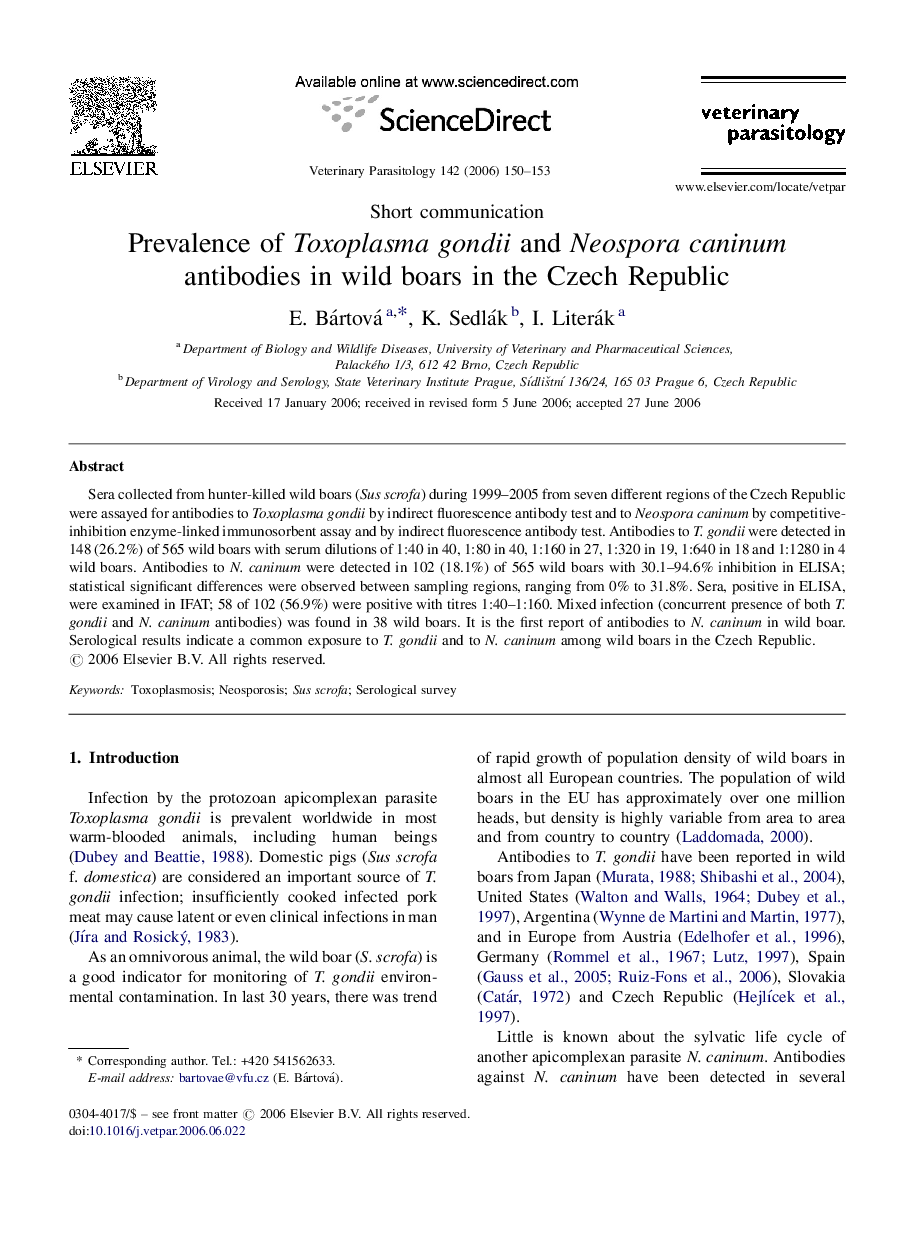| Article ID | Journal | Published Year | Pages | File Type |
|---|---|---|---|---|
| 2472292 | Veterinary Parasitology | 2006 | 4 Pages |
Sera collected from hunter-killed wild boars (Sus scrofa) during 1999–2005 from seven different regions of the Czech Republic were assayed for antibodies to Toxoplasma gondii by indirect fluorescence antibody test and to Neospora caninum by competitive-inhibition enzyme-linked immunosorbent assay and by indirect fluorescence antibody test. Antibodies to T. gondii were detected in 148 (26.2%) of 565 wild boars with serum dilutions of 1:40 in 40, 1:80 in 40, 1:160 in 27, 1:320 in 19, 1:640 in 18 and 1:1280 in 4 wild boars. Antibodies to N. caninum were detected in 102 (18.1%) of 565 wild boars with 30.1–94.6% inhibition in ELISA; statistical significant differences were observed between sampling regions, ranging from 0% to 31.8%. Sera, positive in ELISA, were examined in IFAT; 58 of 102 (56.9%) were positive with titres 1:40–1:160. Mixed infection (concurrent presence of both T. gondii and N. caninum antibodies) was found in 38 wild boars. It is the first report of antibodies to N. caninum in wild boar. Serological results indicate a common exposure to T. gondii and to N. caninum among wild boars in the Czech Republic.
